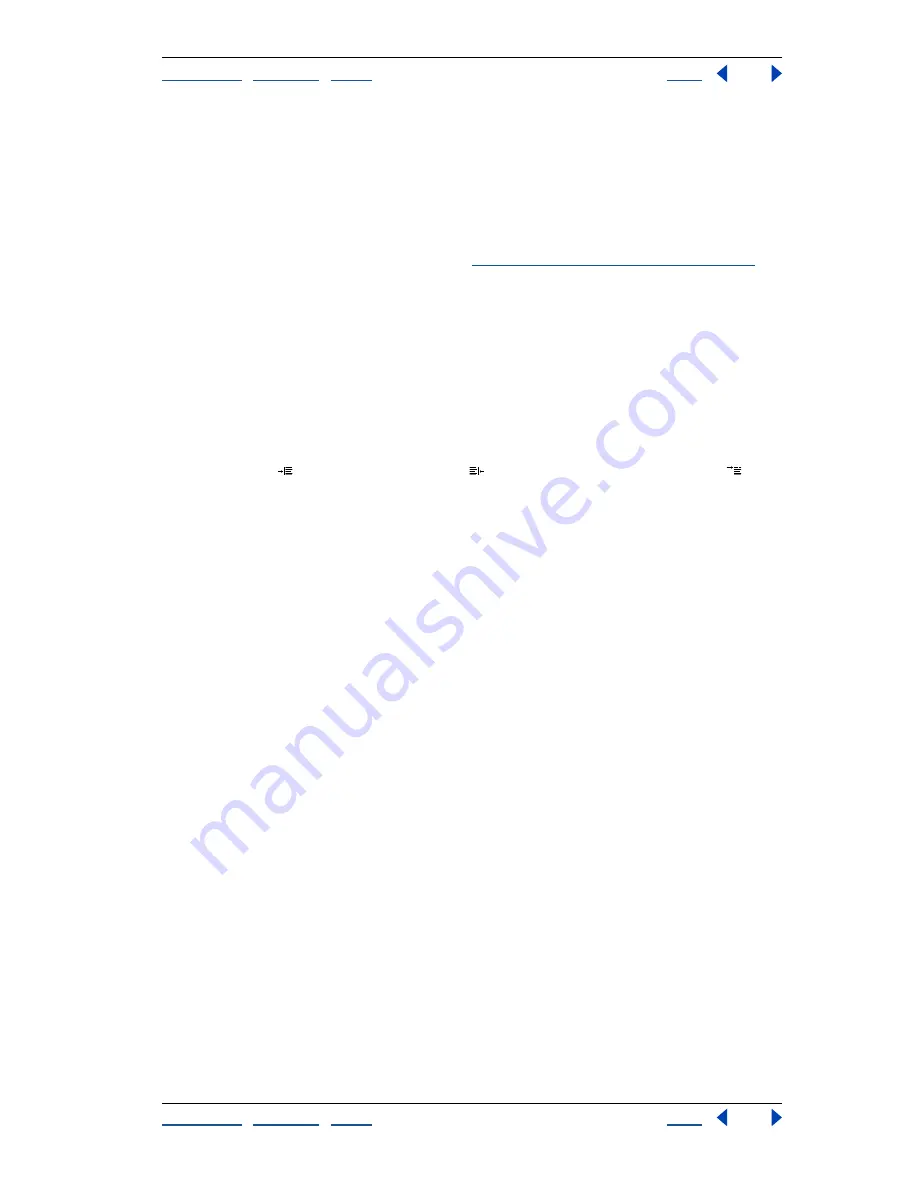
Using Help
|
Contents
|
Index
Back
273
Adobe Illustrator Help
Using Type
Using Help
|
Contents
|
Index
Back
273
Specifying paragraph indentation
Indentation
specifies the amount of space between the ends of each line of type and the
path that contains that type. You can indent from the left or the right side of the path,
and you can choose additional indentation for the first line of a paragraph. Negative
indentation moves the type outside the margin.
Note:
The First line left indent and the Left indent on the Paragraph palette also appear on
the Tab Ruler palette as small triangles. (See
“Using the Tab Ruler palette” on page 279
.)
Indentation is measured in the units specified in the Type pop-up menu in the Units &
Undo Preferences dialog box and is selected using the Paragraph palette.
Indentation affects only the selected paragraph or paragraphs, so you can easily set
different indentations for paragraphs.
To specify paragraph indentation:
1
Select any type container or type path using a selection tool, or set an insertion point,
or select a block of type using the type tools.
2
In the Paragraph palette, select the indentation text box you want to change: the left
indent text box , the right indent text box , or the first line left indent text box .
3
Enter an indentation value.
To create a first line hanging indentation, type a negative value in the First line left indent
text box.
4
Press Enter, Return, or Tab.
Specifying alignment options
Alignment
controls how lines of type are arranged in paragraphs. Each paragraph (or line
in point type) can be aligned left, right, centered, or justified.
Justify All Lines justifies all the type and forces the last line in a paragraph to be justified to
both margins. By default, the last line of a justified paragraph is left aligned with a ragged
right margin.
To change alignment options from the Paragraph palette:
1
Do one of the following:
•
Select any type container or type path using a selection tool.
•
Set an insertion point or select a block of type using the type tools.
2
In the Paragraph palette, click the alignment style you want.
Specifying hanging punctuation
Hanging punctuation
controls whether punctuation marks fall inside or outside the
margins. Hanging punctuation is controlled by the Hang Punctuation option in the
Paragraph palette. If hanging punctuation is turned on, the following characters appear
outside the margins: periods, commas, single-quotation marks, double-quotation marks,
apostrophes, hyphens, em dashes, en dashes, colons, and semicolons.
Punctuation hangs when text is aligned right, aligned left, centered, or justified. When a
punctuation character is followed by an end quotation mark, both characters hang.






























